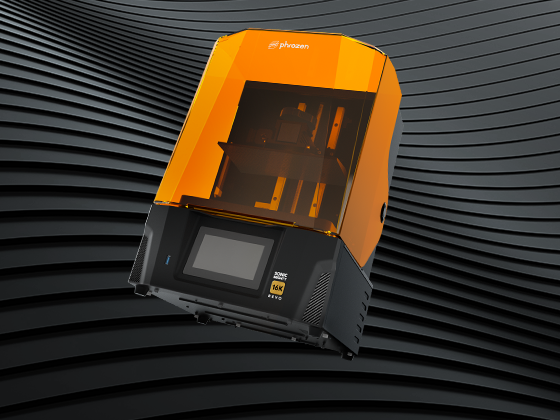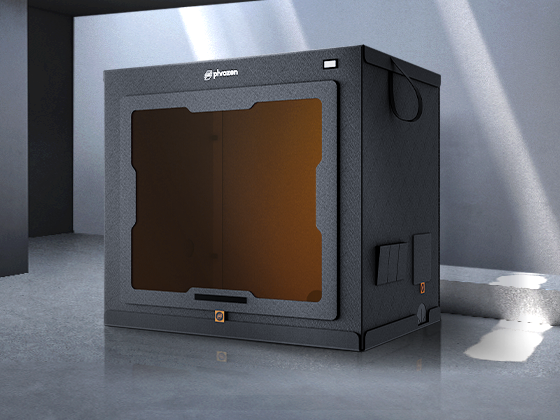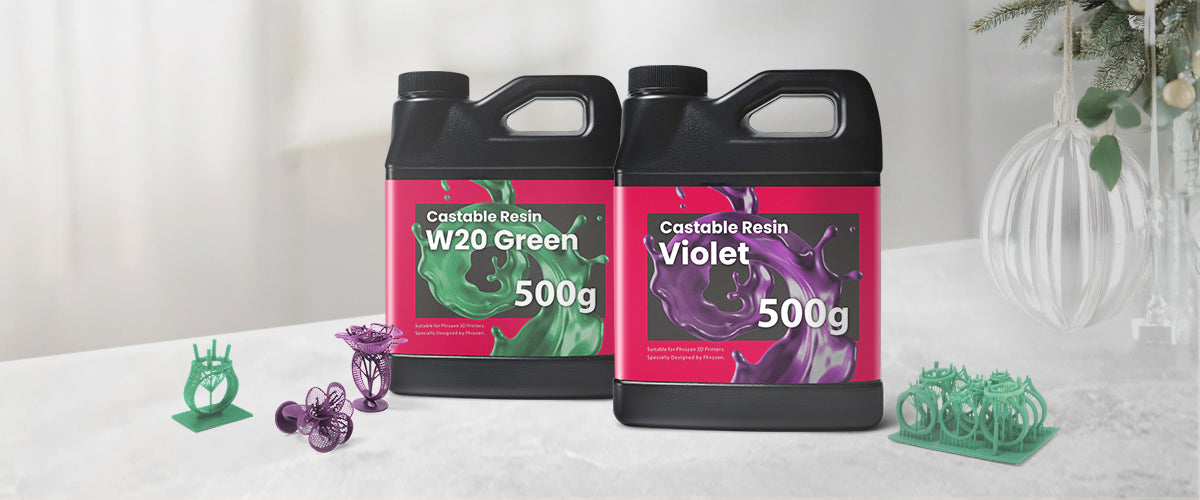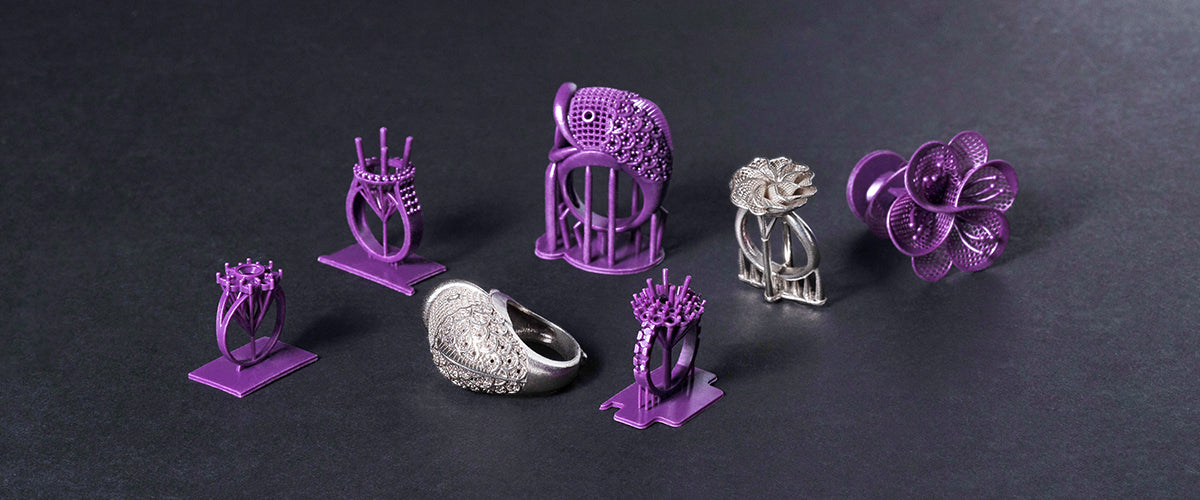When it comes to jewelry design, choosing the right castable resin can save you time, reduce failed prints, and improve your final results. Whether you’re crafting delicate filigree or bold signet rings, not all resins behave the same. Some burn clean. Some don’t. Some warp. Some hold fine details perfectly. So how do you know which resin is right for your work?
This guide breaks it down clearly. No jargon. No hype. Just real information you can use right now—whether you're just getting started or already deep into production.
What Makes a Jewelry Resin “Castable” (and What to Avoid)
Not every 3D printing resin is meant for casting. Castable resins are formulated to melt or burn out of a mold cleanly, leaving no ash or residue that could interfere with metal casting. For jewelers, this step is critical. If your resin leaves behind even small traces of ash or carbon, it can ruin the detail and texture of the final metal piece.
A proper castable resin should meet a few core standards:
-
Clean burnout: When heated, it needs to vaporize or melt away with minimal to zero ash content. If it doesn’t, you’ll be left with surface flaws or porosity in your final cast.
-
Low shrinkage: It has to retain the dimensions of your design after printing and curing. High shrinkage means your carefully crafted ring could come out too small or warped.
-
Detail preservation: Your resin must print sharp lines and fine textures. That means a stable, high-resolution material capable of smooth surfaces without distortion.
Some low-grade resins may label themselves as “castable” but fall short in actual production. These often fail during burnout, leave residue, or show inconsistent results. It’s important to check a resin’s ash content and compatibility with investment materials like Plasticast, Prestige Optima, or Ultravest Maxx—a clean result with these confirms the resin’s quality.
Factors That Matter Most (Based on How Jewelers Actually Work)
Let’s move beyond just the spec sheet. Jewelers work differently depending on the type of designs they create, the equipment they use, and how they manage production. Here are the resin qualities that actually impact your day-to-day work.
Printing Compatibility & Resolution
Every resin interacts differently with SLA, DLP, or LCD printers. Jewelry printing usually demands LCD or DLP printers due to their ability to produce sharp layers and faster results. Castable resins need to be tuned to these printer types for reliable results—otherwise, you’ll waste time calibrating and troubleshooting.
For example, resins designed for LCD printing should offer a resolution of around 0.050 mm (XY). This is critical for maintaining the detail in prongs, engraved patterns, and tiny stone settings. A resin that can’t handle this level of precision may cause blurred lines or rounded edges, which are difficult to fix post-casting.
Burnout Behavior
This is where real castable performance is tested. During the burnout cycle, your printed model is heated until the resin completely melts or burns out of the mold, leaving a cavity for the molten metal. If the resin leaves residue, it causes porosity—tiny holes or roughness in your cast.
High-performance resins are tested to leave ash content as low as 0.0–0.1%, which is practically clean. This makes them compatible with standard burnout cycles used in jewelry casting.
A good example is Phrozen Castable Resin W20 Green, which has a verified ash content of 0.0–0.1% and is ideal for fine patterns like milgrain or engraved text. It handles the burnout process reliably when used with the right investments, giving jewelers peace of mind during casting.
Surface Finish & Shrinkage
When you're creating jewelry, surface quality isn't just a nice-to-have—it's essential. Any visible layer lines, warping, or distortion can mean extra finishing time or a failed piece altogether. That’s why a resin’s ability to print clean surfaces with minimal shrinkage is so important.
Surface finish is affected by both the printer’s resolution and the resin’s formulation. Even at high resolutions, some resins still produce uneven textures that require aggressive sanding or polishing. A good castable resin should allow you to print smooth surfaces that need minimal post-processing before casting. This doesn’t just save time—it also preserves detail, especially on small features like fine patterns, raised letters, or micro-claws.
Shrinkage, on the other hand, can distort your designs. If a resin shrinks too much after curing or during burnout, your model may not match its intended size. That can throw off ring diameters or make stone settings unusable. Castable resins designed specifically for jewelry, like Phrozen Castable Jewelry Violet, are optimized to keep shrinkage low. This ensures your model retains its form throughout the printing and casting process, even with small, intricate parts.
Look for resins with a track record of dimensional accuracy. If the manufacturer provides shrinkage rates or lab-tested specs, that’s a good sign. Phrozen’s castable resins typically note these details, with shrinkage rates low enough to meet professional jewelry standards.
Odor & Safety Considerations
Working with resin comes with certain safety requirements, but not all resins are created equal in this area either. Some castable resins—especially earlier generations—emit strong, unpleasant fumes that can make a studio space uncomfortable or even unsafe without proper ventilation.
Modern formulations have addressed this. Many now feature low-odor or no strong-smell characteristics, which is particularly helpful for jewelers working in small studios or home setups. While you should always wear gloves, work in a well-ventilated area, and avoid prolonged skin contact, a low-odor resin reduces the risk of headaches or respiratory discomfort during long printing sessions.
Phrozen’s line of castable resins, including W40 Orange and W20 Green, are specifically noted for having no foul or strong odor during printing or curing. This makes them more suitable for consistent use in studio environments without needing industrial fume extraction systems.
Safety goes beyond just smell. It’s also about chemical formulation. Some budget resins contain harsh or carcinogenic monomers that can pose long-term health risks. Choosing products from brands that publish safety data sheets (SDS) and commit to safer formulations is important. Phrozen resins are free of known harmful additives and come with clear handling instructions and safety data for peace of mind.
Find the Right Fit Based on Your Jewelry Style
Every jeweler works differently, and the best resin for your needs depends heavily on the kind of jewelry you make. Are you focused on mass-producing clean, simple forms? Or are you crafting intricate, one-of-a-kind pieces? Here’s how to choose based on your workflow and design style.
For Batch Production and Bold Forms
If you're producing medium to large pieces like signet rings, medallions, or bracelets with bold curves and raised details, you need a resin that supports large volumes without distortion. You also want clean burnout and minimal post-processing to speed up your production cycle.
This is where Phrozen Castable Resin W40 Orange excels. With 40% wax content, it’s engineered for clean burnout and is ideal for casting larger, organic designs. It produces crisp results with very little ash residue and minimal gating, meaning your casted models clean up faster. Plus, its low odor and smooth surface finish make it easy to work with during long production runs.
For Delicate Designs and Fine Features
Designers focused on intricate elements—like micro prongs, filigree, milgrain, and tiny engravings—need a different kind of performance. You need a resin that prints sharply and handles delicate structures without deformation during curing or burnout.
Phrozen Castable Resin W20 Green is made specifically for this type of work. It contains 20% wax, prints fine detail with high precision, and burns out cleanly for accurate casts. It’s best suited for light to medium-sized pieces, especially those that require flawless surface textures and clean lines.
For High-Precision, Low-Shrinkage Needs
If you often design small parts that require near-perfect accuracy—like stone settings, matched ring sizes, or design prototypes—your priority is stability. In these cases, even a slight warping can ruin your results.
Phrozen Castable Jewelry Violet Resin offers low shrinkage and high detail reproduction. It’s ideal for printing one-off pieces or prototypes that need to match CAD specifications exactly. If your workflow relies on tight tolerances and smooth prints right out of the vat, this resin is a strong fit.
These three options provide a wide range of casting solutions, from bulk production to intricate artistry. You only need to choose one that aligns with how you work and what you create.
Still Torn Between Wax and Resin? Read This First
If you’re still deciding whether to stick with traditional wax or switch to castable resin, you’re not alone. Many jewelers work somewhere in between—combining hand-carved artistry with modern digital tools. But understanding how both materials behave in real workflows can make your decision easier.
Wax has been the standard for decades. It’s familiar, easy to carve, and burns out cleanly with minimal risk. For jewelers who prefer sculpting by hand or making one-of-a-kind pieces, wax offers a tactile process that’s hard to replace. But it also takes time, skill, and repetition. If you need to produce multiple copies of the same design, or if precision is critical, wax becomes inefficient.
Castable resin, by contrast, allows you to move from CAD to casting without manual modeling. You can print multiple designs at once, replicate exact dimensions, and drastically cut production time. While early resins struggled with clean burnout, modern ones—like Phrozen’s lineup—burn nearly as clean as wax with the right investment material and schedule.
For a detailed side-by-side comparison of how wax and resin perform during design, burnout, and casting, read: Jewelry Casting in 2025: Wax or Resin?
This guide walks through everything from surface texture to workflow compatibility. It’s especially useful if you’re transitioning from wax or blending both methods.
Final Take: Use What Supports Your Workflow
There’s no single right choice for every jeweler. The best castable resin—or wax—comes down to what fits the way you work. If you enjoy hands-on carving and slower, artistic workflows, wax might still feel like the right material. But if your process is digital, and you're looking to scale production or improve precision, modern resins offer clear advantages.
Phrozen’s range of castable resins covers a wide spectrum of needs:
-
W40 Orange for medium-to-large designs with bold detail and high wax content.
-
W20 Green for fine features and clean burnout in light-to-medium-sized pieces.
-
Jewelry Violet for low shrinkage, stable prints, and sharp detail accuracy.
If you’re unsure where to begin, this overview of jewelry resins for LCD printing will help guide your choice: A Jeweler’s Guide to Choosing Resin for LCD 3D Printing
Ultimately, both wax and resin are powerful tools. But with today’s improvements in castable resin technology, more jewelers are shifting to digital workflows that reduce manual effort while maintaining exceptional quality. If you're ready to speed up your casting process without compromising on detail, now’s a great time to make the switch.
Explore the full range of Phrozen resins here and see how the right material can simplify your workflow.
FAQs from Real Jewelers, Answered
There are a few questions we hear over and over from jewelers working with 3D printing. Here are the most common—and the answers that matter.
Can I leave resin in the vat overnight?
It’s not recommended. Leaving resin exposed to ambient light and dust can lead to partial curing or contamination, which affects print quality. Always clean your resin vat and cover it properly if you're not printing right away.
Do I need to shake the resin before printing?
Yes. Shaking ensures the resin’s pigments and additives are evenly distributed. Without mixing, you risk inconsistent results and failed prints. Shake vigorously for 30–60 seconds before each use.
Is post-curing necessary for castable resin?
Some resins require UV post-curing to achieve full hardness, but not all. Phrozen’s castable resins are designed to work without post-curing, streamlining the process for jewelers and reducing potential errors during that step.
Which resins work best with LCD printers?
Resins labeled as LCD-compatible or high-precision/jewelry-specific tend to give better results. They’re formulated for the light intensity and wavelength of LCD printers. Phrozen’s entire castable lineup is LCD-optimized.
How can I get rid of visible layer lines?
Start with high-resolution settings—like 50 µm layer height or finer. After printing, sand with fine-grit sandpaper and use polishing compounds. For more complex surfaces, consider a clear coat or resin filler to smooth the surface before casting.
Best Castable Resin for Jewelry 3D Printing in 2025
Learn how to choose the right castable resin for jewelry 3D printing. Compare surface quality, burnout behavior, and print precision with expert-backed advice.










